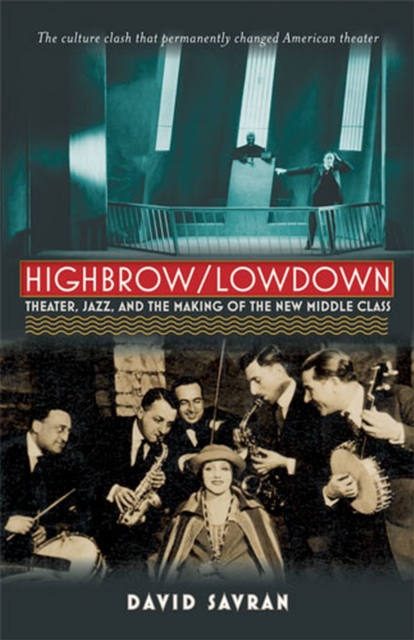
Highbrow/Lowdown : Theater, Jazz and the Making of the New Middle Class Paperback / softback
by David Savran
Paperback / softback
Description
Highbrow/Lowdown explores the twentieth century's first culture war and the forces that permanently transformed American theater into the art form we know today.
The arrival of jazz in the 1920s sparked a cultural revolution that was impossible to contain.
The music affected every stratum of U.S. society and culture, confusing and challenging long-entrenched hierarchies based on class, race, and ethnicity.
But jazz was much more than the music---it was also a powerful cultural force that brought African American, Jewish, and working-class culture into the white Protestant mainstream.
When the influence of jazz spread to legitimate theater, playwrights, producers, and critics rushed to distinguish the newly emerging literary theater from its illegitimate cousins.
The efforts to defeat the democratizing influences of jazz and to canonize playwrights like Eugene O'Neill triumphed, giving birth to American theater as we know it today.
David Savran is Distinguished Professor of Theatre and Vera Mowry Roberts Chair in American Theatre at the Graduate Center, City University of New York.|Highbrow/Lowdown explores the twentieth century's first culture war and the forces that permanently transformed American theater into the art form we know today.
The arrival of jazz in the 1920s sparked a cultural revolution that was impossible to contain.
The music affected every stratum of U.S. society and culture, confusing and challenging long-entrenched hierarchies based on class, race, and ethnicity.
But jazz was much more than the music---it was also a powerful cultural force that brought African American, Jewish, and working-class culture into the white Protestant mainstream.
When the influence of jazz spread to legitimate theater, playwrights, producers, and critics rushed to distinguish the newly emerging literary theater from its illegitimate cousins.
The efforts to defeat the democratizing influences of jazz and to canonize playwrights like Eugene O'Neill triumphed, giving birth to American theater as we know it today.
David Savran is Distinguished Professor of Theatre and Vera Mowry Roberts Chair in American Theatre at the Graduate Center, City University of New York.
Information
-
Available to Order - This title is available to order, with delivery expected within 2 weeks
- Format:Paperback / softback
- Pages:336 pages, 21 black and white photographs
- Publisher:The University of Michigan Press
- Publication Date:08/07/2010
- Category:
- ISBN:9780472034451
Information
-
Available to Order - This title is available to order, with delivery expected within 2 weeks
- Format:Paperback / softback
- Pages:336 pages, 21 black and white photographs
- Publisher:The University of Michigan Press
- Publication Date:08/07/2010
- Category:
- ISBN:9780472034451






